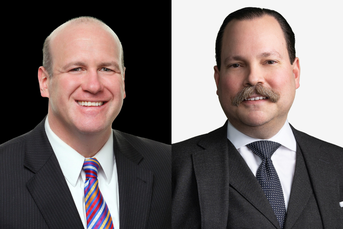FPA takes CFP Board at its word that it won’t crowd onto association’s turf

The CFP Board's decision to split itself into two nonprofits would allow it to establish a membership organization, but groups like FPA don't expect it to do so.
The Financial Planning Association isn’t concerned that the Certified Financial Planner Board of Standards Inc. will encroach on its turf as the board reorganizes itself under two different tax categories, one of which gives it the option of creating its own FPA.
The CFP Board announced Wednesday that it will split into two nonprofit organizations in order to better pursue its strategic goal of increasing the number of financial advisors holding the CFP credential. The move also will allow the board to be more aggressive in marketing CFPs to potential investors.
One of the new entities is the CFP Board Center for Financial Planning, which will focus on research, expanding diversity in the CFP field and pro bono work, among other activities. It will have a 501(c)(3) tax designation because of its public orientation.
The other new body is the CFP Board of Standards, which will concentrate on credentialing. It will set and enforce the competency and ethical standards for mark holders. This organization, which will operate as a 501(c)(6), will work to advance the profession.
As a so-called “6,” the CFP Board of Standards could establish a membership organization like FPA, but CFP officials said they have no intention of doing so.
“We don’t want to be FPA or NAPFA,” CFP Board Chair Dan Moisand said earlier this week.
The FPA is still digesting the CFP Board reorganization, but at first glance it’s not concerned that CFP Board will wander into its territory.
“They’re good friends of ours,” FPA CEO Patrick Mahoney said in an interview. “We respect them and take them at their word.”
Membership organizations in the planning field don’t expect to see CFP Board engage in membership activities, such as establishing chapters, hosting conferences, writing continuing education materials and forming a political action committee.
“We certainly understand why they made the [reorganization] move,” said Jeff Jones, chairman of the board of the National Association of Personal Financial Advisors. “The 501(c)(3) was limiting their ability to push the profession forward.”
Jones said NAPFA will continue to work well with the CFP Board.
“It’s been strong support from both sides for each other, and that won’t change at this time,” said Jones, a partner and director of financial planning at Longview Financial Advisors.
The CFP Board action comes as the FPA has begun working to achieve legal recognition for the term “financial planner.” Although CFP Board officials say they support the concept of title protection, the organization opposes planner regulation at the state level, an avenue FPA might take.
Moisand denied that the CFP Board’s reorganization was a response to FPA’s title initiative, pointing out that the restructuring was being considered before FPA announced its effort.
A disagreement over how to approach title protection “doesn’t mean either organization is wrong,” Mahoney said. “It just reflects a difference in focus and priority. We’ll be talking to many, many, many constituents across the profession, including CFP Board, this year.”
The CFP Board says its reorganization will help it achieve its goal of reaching a total of 150,000 CFPs in the United States by 2030, up from approximately 95,000 now. But one CFP said that there’s such a thing as too many CFPs.
“They seem obsessed with growing in volume more than supporting the CFPs that already exist or, frankly, than ensuring the credential itself doesn’t experience ‘inflation’ as they continue to ‘print CFPs,’” Andrew Lippert, founder of Simplified Wealth, wrote in an email. “If they spent half as much time as they do fixated on growth and focused on the value behind the credential, growth would take care of itself, sustainably.”
Another CFP applauded the board’s restructuring to make a stronger push to expand the profession.
“Happy to see this,” Jirayr Kembikian, co-founder of Citrine Capital, tweeted Wednesday. “It’s exactly what CFP Board should be spending money on.”
In a Twitter exchange Wednesday, the CFP Board indicated that separating into two nonprofits won’t increase the annual cost of CFP certification, which is approximately $455.
“No, this change will not affect the annual certification fee,” the CFP Board account tweeted in response to a tweet from Wealthbridge Financial Advisors.
‘IN the Nasdaq’ with Carin Pai, head of portfolio management and equity strategy at Fiduciary Trust International
Learn more about reprints and licensing for this article.








